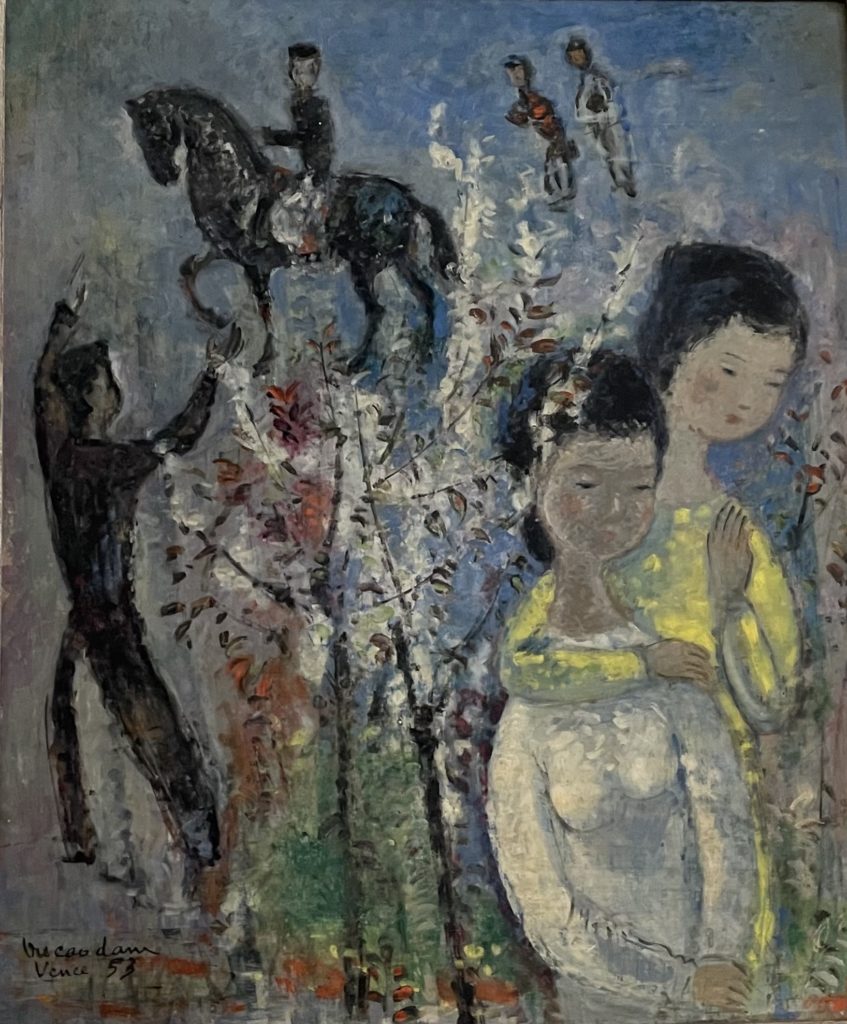Vu Cao Dam, « Le Départ », 1953, or the tragedy of the present times
Living in France since 1931, Vu Cao Dam – who never returned to Vietnam – was a subtle thurifer of Vietnamese culture.
The conquest of otherness, the cornerstone of his life, went hand in hand, for a time, with the defense of his native country’s independence, encouraged by the fascination he felt for Ho Chi Minh during the latter’s visit to Paris in 1946.
However, our picture is underpinned by a sensed hope and foreboding disillusionment: that of deconstruction.
In 1953, the artist’s hope was twofold: that of renewing himself in Vence after his stays in Paris, Vanves and Béziers. That of his native Vietnam, where everyone thought that after 7 years of painful war, independence should be granted enabling the belligerents to achieve a peace that would humiliate no one.
But disillusionment, which he already sensed, would follow. Doubly so, because while he knew that his ancestral world was crumbling, he was no longer certain that the new one would be better than the previous one. With his lucid passion, Vu Cao Dam offers us a work nourished by deconstructive energy.
.

Six figures in four different scenes. In an almost stormy atmosphere, two women in the lower right foreground, whose hairstyles and dresses, unlike their faces, are not typically Vietnamese, a man, from behind, in traditional Vietnamese costume, and further to the left, a horseman and, finally, two individuals, undifferentiated, in the background on the right.
The horse exudes strength, in contrast to the docile, even passive model of previous years.
The tree can’t be linked to any species, while the Kim-Vân-Kiêu characters – Kieu and Vân at bottom right, Kim on horseback – seem to have been taken up again and secularized. All three have left the narrative flow of classic Vietnamese literature to become embodied in that of immediate history.
The man in traditional dress turns his back to greet and encourage the rider off to war (?) Can these men and women of the past, even if they are the actors of 1953, understand that the fight for independence implies a dislocation of their world, which the victors will classify as “feudal”?
A salute like a farewell, a departure like a quest, a presence like confusion. It’s all there in this work, with its innovative use of Caparol, characteristic of the artist’s pictorial experiments in Vence.
Jean-François Hubert